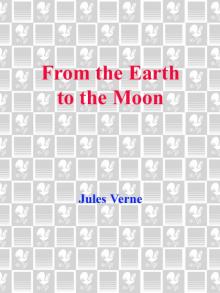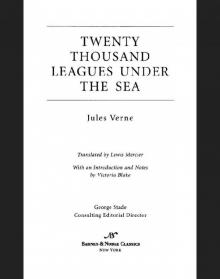- Home
- Jules Verne
From the Earth to the Moon; and, Round the Moon Page 6
From the Earth to the Moon; and, Round the Moon Read online
Page 6
CHAPTER VI
PERMISSIVE LIMITS OF IGNORANCE AND BELIEF IN THE UNITED STATES
The immediate result of Barbicane's proposition was to place uponthe orders of the day all the astronomical facts relative to theQueen of the Night. Everybody set to work to study assiduously.One would have thought that the moon had just appeared for thefirst time, and that no one had ever before caught a glimpse ofher in the heavens. The papers revived all the old anecdotes inwhich the "sun of the wolves" played a part; they recalled theinfluences which the ignorance of past ages ascribed to her; inshort, all America was seized with selenomania, or had become moon-mad.
The scientific journals, for their part, dealt more especially withthe questions which touched upon the enterprise of the Gun Club.The letter of the Observatory of Cambridge was published by them,and commented upon with unreserved approval.
Until that time most people had been ignorant of the mode in whichthe distance which separates the moon from the earth is calculated.They took advantage of this fact to explain to them that thisdistance was obtained by measuring the parallax of the moon.The term parallax proving "caviare to the general," they furtherexplained that it meant the angle formed by the inclination of twostraight lines drawn from either extremity of the earth's radiusto the moon. On doubts being expressed as to the correctness ofthis method, they immediately proved that not only was the meandistance 234,347 miles, but that astronomers could not possiblybe in error in their estimate by more than seventy miles either way.
To those who were not familiar with the motions of the moon,they demonstrated that she possesses two distinct motions, thefirst being that of rotation upon her axis, the second beingthat of revolution round the earth, accomplishing both togetherin an equal period of time, that is to say, in twenty-seven andone-third days.
The motion of rotation is that which produces day and night onthe surface of the moon; save that there is only one day and onenight in the lunar month, each lasting three hundred andfifty-four and one-third hours. But, happily for her, the faceturned toward the terrestrial globe is illuminated by it with anintensity equal to that of fourteen moons. As to the otherface, always invisible to us, it has of necessity three hundredand fifty-four hours of absolute night, tempered only by that"pale glimmer which falls upon it from the stars."
Some well-intentioned, but rather obstinate persons, could notat first comprehend how, if the moon displays invariably thesame face to the earth during her revolution, she can describeone turn round herself. To such they answered, "Go into yourdining-room, and walk round the table in such a way as to alwayskeep your face turned toward the center; by the time you willhave achieved one complete round you will have completed oneturn around yourself, since your eye will have traversedsuccessively every point of the room. Well, then, the room isthe heavens, the table is the earth, and the moon is yourself."And they would go away delighted.
So, then the moon displays invariably the same face to theearth; nevertheless, to be quite exact, it is necessary to addthat, in consequence of certain fluctuations of north and south,and of west and east, termed her libration, she permits rathermore than half, that is to say, five-sevenths, to be seen.
As soon as the ignoramuses came to understand as much as thedirector of the observatory himself knew, they began to worrythemselves regarding her revolution round the earth, whereupontwenty scientific reviews immediately came to the rescue.They pointed out to them that the firmament, with its infinitudeof stars, may be considered as one vast dial-plate, upon which themoon travels, indicating the true time to all the inhabitants ofthe earth; that it is during this movement that the Queen ofNight exhibits her different phases; that the moon is _full_when she is in _opposition_ with the sun, that is when the threebodies are on the same straight line, the earth occupying thecenter; that she is _new_ when she is in _conjunction_ with thesun, that is, when she is between it and the earth; and, lastlythat she is in her _first_ or _last_ quarter, when she makeswith the sun and the earth an angle of which she herself occupiesthe apex.
Regarding the altitude which the moon attains above the horizon,the letter of the Cambridge Observatory had said all that was tobe said in this respect. Every one knew that this altitudevaries according to the latitude of the observer. But the onlyzones of the globe in which the moon passes the zenith, that is,the point directly over the head of the spectator, are ofnecessity comprised between the twenty-eighth parallels andthe equator. Hence the importance of the advice to try theexperiment upon some point of that part of the globe, in orderthat the projectile might be discharged perpendicularly, and sothe soonest escape the action of gravitation. This was anessential condition to the success of the enterprise, andcontinued actively to engage the public attention.
Regarding the path described by the moon in her revolution roundthe earth, the Cambridge Observatory had demonstrated that thispath is a re-entering curve, not a perfect circle, but anellipse, of which the earth occupies one of the _foci_. It wasalso well understood that it is farthest removed from the earthduring its _apogee_, and approaches most nearly to it at its _perigee_.
Such was then the extent of knowledge possessed by everyAmerican on the subject, and of which no one could decentlyprofess ignorance. Still, while these principles were beingrapidly disseminated many errors and illusory fears proved lesseasy to eradicate.
For instance, some worthy persons maintained that the moon wasan ancient comet which, in describing its elongated orbit roundthe sun, happened to pass near the earth, and became confinedwithin her circle of attraction. These drawing-room astronomersprofessed to explain the charred aspect of the moon-- a disasterwhich they attributed to the intensity of the solar heat; only,on being reminded that comets have an atmosphere, and that themoon has little or none, they were fairly at a loss for a reply.
Others again, belonging to the doubting class, expressed certainfears as to the position of the moon. They had heard it saidthat, according to observations made in the time of the Caliphs,her revolution had become accelerated in a certain degree.Hence they concluded, logically enough, that an acceleration ofmotion ought to be accompanied by a corresponding diminution inthe distance separating the two bodies; and that, supposing thedouble effect to be continued to infinity, the moon would end byone day falling into the earth. However, they became reassuredas to the fate of future generations on being apprised that,according to the calculations of Laplace, this acceleration ofmotion is confined within very restricted limits, and that aproportional diminution of speed will be certain to succeed it.So, then, the stability of the solar system would not be derangedin ages to come.
There remains but the third class, the superstitious.These worthies were not content merely to rest in ignorance;they must know all about things which had no existence whatever,and as to the moon, they had long known all about her. One setregarded her disc as a polished mirror, by means of which peoplecould see each other from different points of the earth andinterchange their thoughts. Another set pretended that out ofone thousand new moons that had been observed, nine hundred andfifty had been attended with remarkable disturbances, such ascataclysms, revolutions, earthquakes, the deluge, etc. Then theybelieved in some mysterious influence exercised by her over humandestinies-- that every Selenite was attached to some inhabitantof the earth by a tie of sympathy; they maintained that theentire vital system is subject to her control, etc. But in timethe majority renounced these vulgar errors, and espoused the trueside of the question. As for the Yankees, they had no otherambition than to take possession of this new continent of the sky,and to plant upon the summit of its highest elevation the star-spangled banner of the United States of America.

 Michael Strogoff; Or the Courier of the Czar: A Literary Classic
Michael Strogoff; Or the Courier of the Czar: A Literary Classic Voyage au centre de la terre. English
Voyage au centre de la terre. English Journey Through the Impossible
Journey Through the Impossible The Castaways of the Flag
The Castaways of the Flag L'île mystérieuse. English
L'île mystérieuse. English Maître du monde. English
Maître du monde. English Around the World in Eighty Days
Around the World in Eighty Days A Voyage in a Balloon
A Voyage in a Balloon From the Earth to the Moon, Direct in Ninety-Seven Hours and Twenty Minutes: and a Trip Round It
From the Earth to the Moon, Direct in Ninety-Seven Hours and Twenty Minutes: and a Trip Round It Paris in the Twentieth Century
Paris in the Twentieth Century City in the Sahara - Barsac Mission 02
City in the Sahara - Barsac Mission 02 The English at the North Pole
The English at the North Pole The Field of Ice
The Field of Ice From the Earth to the Moon
From the Earth to the Moon Un capitaine de quinze ans. English
Un capitaine de quinze ans. English The Mysterious Island
The Mysterious Island Les indes-noirs. English
Les indes-noirs. English Robur-le-conquerant. English
Robur-le-conquerant. English Propeller Island
Propeller Island Around the World in Eighty Days. Junior Deluxe Edition
Around the World in Eighty Days. Junior Deluxe Edition Les forceurs de blocus. English
Les forceurs de blocus. English In the Year 2889
In the Year 2889 Journey to the Centre of the Earth
Journey to the Centre of the Earth Twenty Thousand Leagues Under the Sea
Twenty Thousand Leagues Under the Sea From the Earth to the Moon; and, Round the Moon
From the Earth to the Moon; and, Round the Moon Vingt mille lieues sous les mers. English
Vingt mille lieues sous les mers. English Cinq semaines en ballon. English
Cinq semaines en ballon. English Twenty Thousand Leagues under the Seas
Twenty Thousand Leagues under the Seas Face au drapeau. English
Face au drapeau. English Michael Strogoff; Or, The Courier of the Czar
Michael Strogoff; Or, The Courier of the Czar Un billet de loterie. English
Un billet de loterie. English The Secret of the Island
The Secret of the Island Off on a Comet! a Journey through Planetary Space
Off on a Comet! a Journey through Planetary Space Into the Niger Bend: Barsac Mission, Part 1
Into the Niger Bend: Barsac Mission, Part 1 All Around the Moon
All Around the Moon A Journey to the Center of the Earth - Jules Verne: Annotated
A Journey to the Center of the Earth - Jules Verne: Annotated 20000 Lieues sous les mers Part 2
20000 Lieues sous les mers Part 2 Robur-le-Conquerant
Robur-le-Conquerant Les Index Noires
Les Index Noires Michael Strogoff; or the Courier of the Czar
Michael Strogoff; or the Courier of the Czar 20000 Lieues sous les mers Part 1
20000 Lieues sous les mers Part 1 Twenty Thousand Leagues Under the Sea (Barnes & Noble Classics Series)
Twenty Thousand Leagues Under the Sea (Barnes & Noble Classics Series) Five Weeks In A Balloon
Five Weeks In A Balloon Journey to the Center of the Earth
Journey to the Center of the Earth 20,000 Leagues Under the Sea
20,000 Leagues Under the Sea Journey to the Center of the Earth (Barnes & Noble Classics Series)
Journey to the Center of the Earth (Barnes & Noble Classics Series) Adrift in the Pacific-Two Years Holiday
Adrift in the Pacific-Two Years Holiday The Collected Works of Jules Verne: 36 Novels and Short Stories (Unexpurgated Edition) (Halcyon Classics)
The Collected Works of Jules Verne: 36 Novels and Short Stories (Unexpurgated Edition) (Halcyon Classics) The Survivors of the Chancellor
The Survivors of the Chancellor Their Island Home
Their Island Home Le Chateau des Carpathes
Le Chateau des Carpathes Les Cinq Cents Millions de la Begum
Les Cinq Cents Millions de la Begum The Floating Island
The Floating Island Cinq Semaines En Ballon
Cinq Semaines En Ballon Autour de la Lune
Autour de la Lune